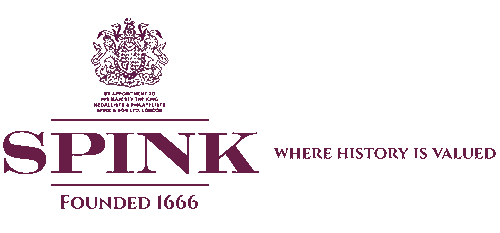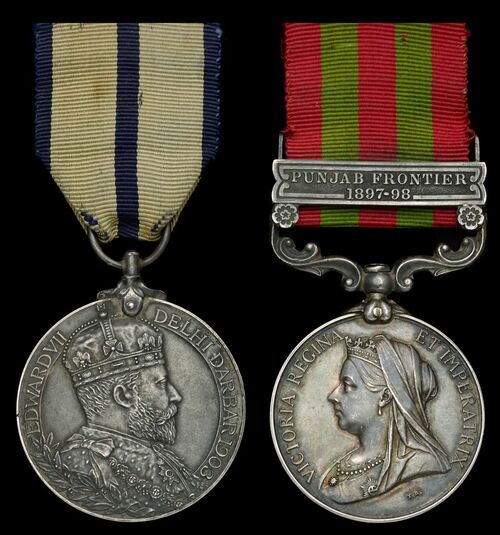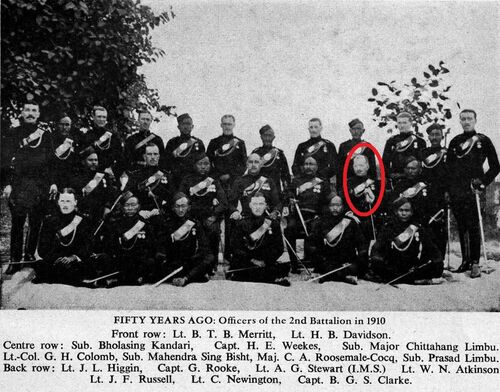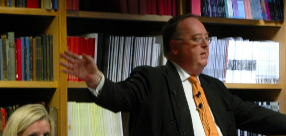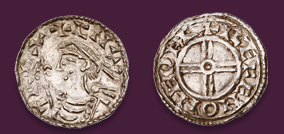Auction: 23111 - Orders, Decorations and Medals - e-Auction
Lot: 541
Pair: Lieutenant-Colonel C. A. Roosemale-Cocq, 8th Gurkha Rifles, late 3rd Bombay Light Infantry, Erinpura Irregulars and 10th Gurkha Rifles
India General Service 1895-1908, 1 clasp, Punjab Frontier 1897-98 (Lieut. C. A. Roosmale Cocq. 3d. Bo: Lt. Infy.); Delhi Durbar 1903, silver copy (Capt. C. A. Roosmale Cocq. Erinpura Irregulars), good very fine (2)
Charles Alexander Roosemale-Cocq was born in 1868 and was appointed 2nd Lieutenant in the 1st (Volunteer) Battalion, Leicestershire Regiment on 6 July 1889. Transferred to the Indian Army and appointed Wing Officer in the 3rd Bombay Light Infantry, 13 December 1890, he served on North West Frontier of India 1897-98 at Malakand, Buner and action of the Tanna Mass. In 1899, he is shown as commanding the Depot 3rd Regiment of Bombay (Light) Infantry and as the Station Staff Officer (SSO) Satara. On 29 November 1901, transferred to the Erinpura Irregular Force as a Wing Officer and serving with the Supply and Transport Corps. Transferred to 10th Gurkha Rifles when it raised its 2nd Battalion in 1908 and to the 1st Battalion 8th Gurkha Rifles in 1914, which he temporary commanded in the rank of Lieutenant-Colonel in Mesopotamia from March-November 1916 [for which he would have been eligible for the British War and Victory Medals and is recorded as such in the Supplement to the Indian Army List January 1924]. He subsequently returned to India to raise the 2nd Reserve Battalion, Gurkha Rifles at the end of 1916, later redesignated 3rd Battalion, 5th Gurkha Rifles (Frontier Force). Handed over command in mid-1917 and thereafter assumed command of the Depot 1st Battalion 8th Gurkha Rifles. He retired in the rank of Lieutenant-Colonel, 20 January 1921.
BUGLE and KUKRI
THE STORY OF THE 10th PRINCESS MARY'S OWN GURKHA RIFLES
During October [1908] the following British officers also joined:-
Major C.A. Roosemale-Cocq, from the 43rd Erinpura Regiment, as a Double-Company Commander.
The 2nd Battalion, 10th Gurkha Rifles was the last of the second battalions of the ten regiments of Gurkha Rifles to be raised, at Fatehgarh in the United Provinces of India, in September 1908. It moved to Almora the following year, the permanent station of 1st Battalion 3rd Gurkha Rifles, where it was accommodated under canvas and was later to suffer from an outbreak of cholera.
In 1911, the 2nd Battalion was selected to attend the Delhi Durbar where it was accommodated in the great camp established outside Delhi for troops attending the Durbar. It later moved to Calcutta for the Royal visit.
The Journal gives more detail:
'...He came to us from that curious Central India relic of the early Indian Army days, the 43rd Erinpura Regiment, and never quite seemed to settle down in his new environment. He claimed to be descended from the sitter for Franz Hals' famous portrait The Laughing Cavalier. A rebel by nature, he did not hit it off very well with some of his seniors, but he was a man of wide culture and scholarly inclination, who did not bear fools gladly and never hesitated to say so. It is perhaps a tribute to his character that he remains clearer in the memory than some of the others [of the 2nd Battalion].'
HISTORY OF THE 8th GURKHA RIFLES 1824-1949
On 10th May 1916, Lieutenant-Colonel A Wilson DSO left the [1st] Battalion to command the 21st Indian Infantry Brigade [in Mesopotamia], and Lieutenant-Colonel CA Roosemalecocq assumed command until 27th September, 1916, when Lieutenant-Colonel Wilson returned. Lieutenant-Colonel CA Roosemale-Cocq is listed as Depot Commander in India of the 1st Battalion from 2 September 1917 to 1 July 1919.
HISTORY OF THE FIFTH ROYAL GURKHA RIFLES (FRONTIER FORCE) 1858 TO 1928
The Third Battalion of the Regiment was a product of the Great War, and enjoyed a brief existence from its raising on November 28th, 1916, until its disbandment in June 1921. The birth place of the battalion was Ferozepore and the task of raising it was entrusted to Lieutenant-Colonel CA Roosemale-Cocq [as Commandant] of 1/8th Gurkhas. He was fortunate that he was under no necessity to start from the beginning, since between December, 4th and December, 22nd , 1916, there were sent to him four companies of trained soldiers Of these, one came from the 2/1st Gurkhas at Dharamsala, one from the 1/4th Gurkhas at Bakloh, one from 1/9th Gurkhas at Dehra Dun, and one from 2/10th Gurkhas ay Maymyo. When these had all concentrated from their widely distant places of origin the strength of the Battalion reached the respectable total of 16 Gurkha officers and 1,031 Gurkha other ranks. This number was augmented during the month of December by the enlistment of 51 recruits. The composition of the unit … comprised all classes enlisted in the twenty battalions of Gurkhas which existed before the war (i.e. Magars and Gurungs, Thakurs and Khas, Rais and Limbus).
When first raised the Battalion was given the designation "2nd Reserve Battalion Gurkha Rifles". On May 30th, 1917, the title was changed to 3rd Battalion 5th Gurkha Rifles. At this time, the Battalion did not contain a single representative of either of the older battalions of the Regiment, with the exception of one re-enlisted man who had taken his discharge from the 2nd Battalion before the war. During the time in Ferozepore it was excused from all station duties [to settle-in] and Lieutenant-Colonel Roosemale-Cocq was given a free hand.
On April 18th, 1917, the Battalion moved to Rawalpindi, which was to prove far from ideal as a station for a newly raised Gurkha unit. The men - and families - suffered from the heat, duties were heavy, and the obligation to provide large fatigues at the arsenal, rest camp and other places, interfered with training.
In July 1917, Lieutenant-Colonel AC Wall took over command of the Battalion from Lieutenant-Colonel Roosemale-Cocq Lieutenant-Colonel Roosemale-Cocq, who proceeded to join 1/8th Gurkhas, then on active service.
The 3-5GR went on to serve in the Third Afghan War 1919, on the lines of communications between Kacha Garhi and Ali Masjid, and in 1920, following the outbreak of the Arab Rebellion, it was sent as reinforcements to Iraq. It was disbanded in India, on its return, March 1921.
Subject to 20% VAT on Buyer’s Premium. For more information please view Terms and Conditions for Buyers.
Sold for
£400
Starting price
£170
